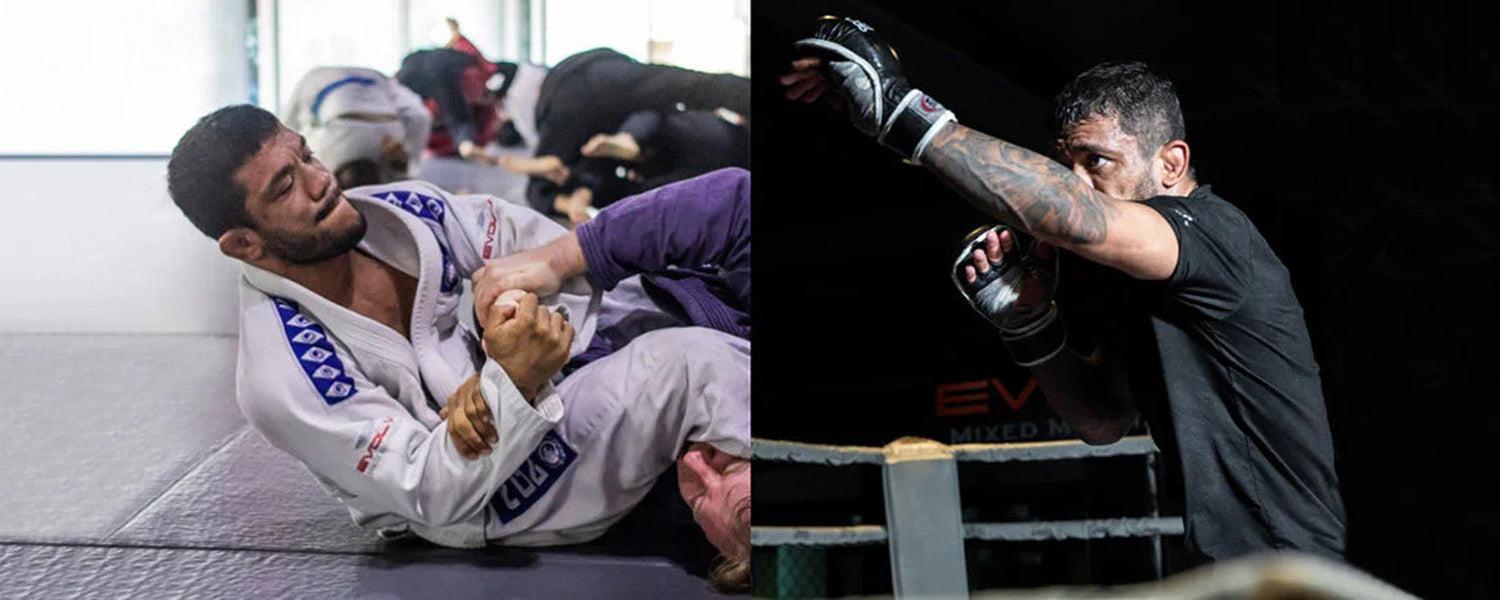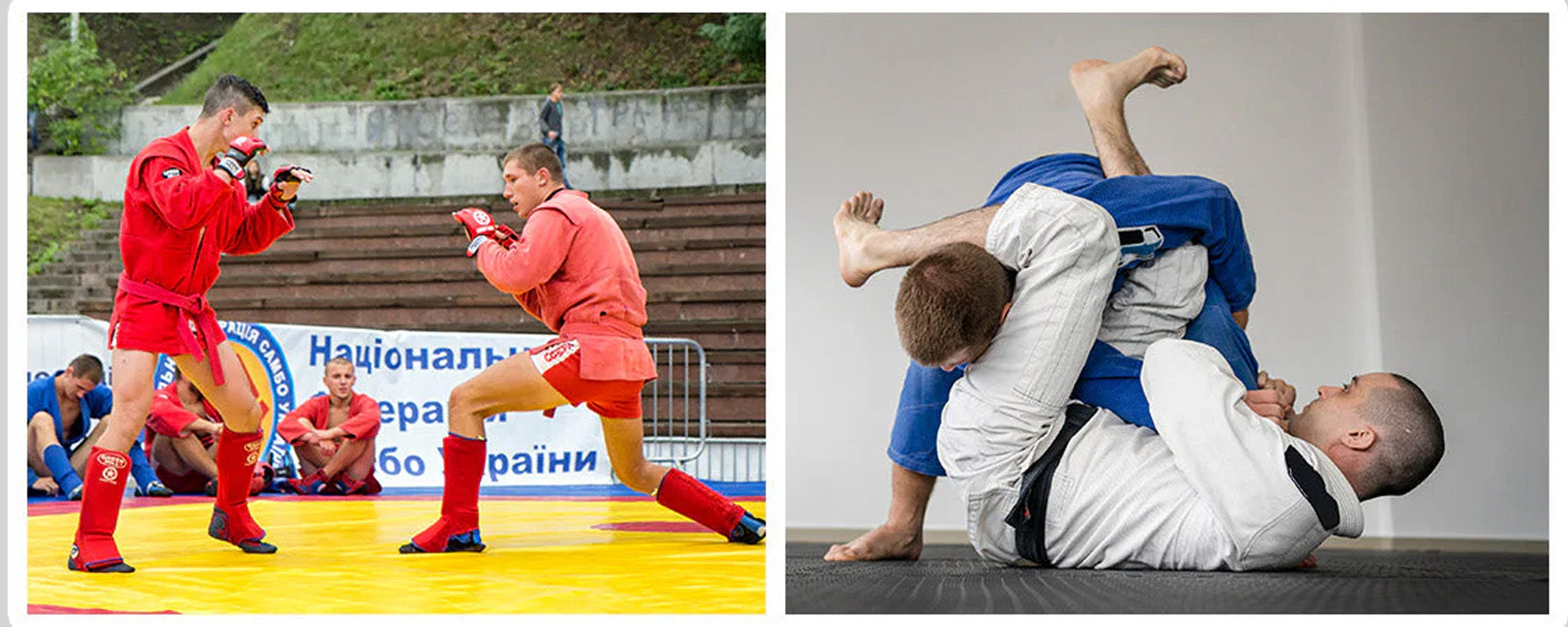Table of content
What are the benefits you can attain from cross-training? How should you do it? What would be the training schedule??
Well, martial arts are an ancient form of self-defense and physical exercise, with styles from around the world providing a rich source of techniques that continue to be studied and passed down today.
Cross-training in martial arts can provide a comprehensive program for physical fitness, self-discipline, and mental focus. Practitioners of various martial arts disciplines can benefit from cross-training in several ways.
1. Cross-Training Martial Arts
Cross-training martial arts has become increasingly popular in improving skills and performance in recent years. Cross-training combines multiple martial arts styles, such as kickboxing, Muay Thai, karate, and jiu-jitsu, into one comprehensive training system.
This mixed martial arts program allows for developing more advanced techniques and strategies for competition or self-defense situations.
2. Benefits Of Cross-Training
Cross-training martial arts offers multiple benefits to those participating. Some include the following:
2.1. Improved Coordination
To get well-rounded martial art practice, cross-training combines two or more martial arts styles. Not only does this allow improved physical fitness, but it also helps to promote better coordination and balance.
The combination of different martial arts provides an enhanced level of variety and challenge, which can help practitioners reach new levels of physical conditioning that are not possible with just one style alone.
2.2. Increased Strength & Endurance
You can quickly gain strength and endurance with cross-training martial arts, such as karate, judo, and taekwondo. This is due to the physical rigors associated with these martial arts styles.
Each style provides an intense physical workout and promotes discipline and mental fortitude. When combining these three martial arts for cross-training, practitioners can expect drastic improvements in their overall strength and endurance.
The blend of the aerobic activity from karate and the intense muscular exertion of judo and taekwondo dynamic movements create a workout that helps build strength while increasing one's cardiovascular threshold.
2.3. Developed Flexibility & Agility
When discussing cross-training martial arts, developed flexibility and agility are essential. Increased flexibility and agility can improve a person's performance in martial arts, increase the range of motion, make them less susceptible to injuries, and more agile in applying BJJ techniques.
Moreover, you can use the following techniques for developing flexibility and agility:
- Stretching exercises such as yoga or pilates.
- Dynamic warm-ups that focus on increasing the heart rate without overworking the muscles.
- Plyometric exercises like squat jumps or burpees help with explosive power.
- Balance drills like kneeling balancing poses or single-leg squats that build stability in the joints and muscles.
- Joint mobility drills like shoulder rotations or neck circles will improve overall strength.
2.4. Adaptability to Different Styles
When you want to adopt different styles in one martial arts training, then cross-training is the one that can serve all your needs. Cross-training revolves around using multiple types of combat instead of focusing on one style exclusively.
The practitioners are exposed to different techniques, stances, and theories from each discipline. It also allows them to bring aspects from each style into their fighting style, creating a unique hybrid approach that can be incredibly effective against opponents with varying backgrounds or experiences.
2.5. Variety in Training Routine
A variation in your training routine will increase your interest and positively impact your mind and body simultaneously by pushing your limits. Cross-training allows for great variety by incorporating elements from different disciplines such as strength training, cardio, yoga, pilates, and more into one's routine.
This combination creates a more holistic approach that focuses on developing physical agility, mental discipline, and spiritual well-being. Introducing new exercises or techniques to your martial arts practice will push you to learn new skills while engaging in activities you may not have tried before.
3. Comparing Types of Martial Arts for Cross Training
There are numerous martial arts styles to choose from, each with its strengths and weaknesses. Evaluating the various martial arts disciplines is essential to determine which best suits your individual needs and goals.
3.1. Karate
Karate, one of the most popular martial arts in the world, can be incorporated into your training schedule if you want to enhance striking. Karate builds strength, cardio endurance, and flexibility – all important components of any cross-training program.
Karate provides a full-body workout that can be tailored to individual needs. It works for every muscle group and builds stamina by combining powerful punches and kicks with light movements such as footwork drills or forms.
It also teaches balance, coordination, timing, and focus – skills that help improve performance in other sports activities or everyday tasks. Karate builds self-confidence in addition to physical fitness since it promotes discipline and mental focus that translates into better results both on the mat and off.
3.2. Taekwondo
This is one of the oldest martial arts and is a popular choice for professionals wanting to cross-train. Originating in Korea, Taekwondo has been around since the 1940s and has become a worldwide activity. It is a form of unarmed combat that combines self-defense techniques and physical exercise with spiritual practices.
The primary goal of taekwondo martial art is to teach its practitioners to defend themselves while increasing their physical fitness. The discipline encourages mental growth through breathing practices, meditation, visualization, and concentration exercises.
Taekwondo also emphasizes striking techniques such as kicking and punching, as well as throws, joint locks, sweeps, and submission holds. As part of training, practitioners are taught how to utilize their body's natural weapons, including hands, feet, elbows, and knees.
3.3. Muay Thai
Muay Thai is known for self-defense, which has gained recognition and popularity far beyond its native Thailand. It is also known as the "Art of Eight Limbs" because it utilizes eight points of contact on the body for punching, kicking, knees and elbow strikes.
Muay Thai is an excellent martial arts option for cross-training due to its combination of physical conditioning, stamina, flexibility, and strength-building exercises.
The core elements that make Muay Thai a great choice for cross-training are using power strikes from different angles and maintaining a high-intensity level in each exercise. Muay Thai effectively challenges oneself physically and mentally while developing coordination, balance, agility, and accuracy.
3.4. Jiu-Jitsu
Jiu-jitsu offers strength and cardiovascular conditioning, balance and flexibility, and self-defense techniques. This martial art combines grappling techniques from judo and striking skills from karate to create a highly versatile system of physical training.
For those looking to mix up their fitness routine with something new, jiu-jitsu is the perfect way to do it. Utilizing both stand-up fighting techniques and ground grappling ability gives you a full-body workout that works for all muscle groups while teaching them valuable self-defense skills.
3.5. Krav Maga
Krav Maga is based on the Israeli military self-defense system. Its primary focus is teaching practitioners how to defend themselves in real-life situations while providing benefits to physical fitness. Krav Maga combines Muay Thai, judo, kickboxing, jiu-jitsu, wrestling, and other fighting styles.
Krav Maga emphasizes using natural body movements to react quickly and effectively. It teaches practitioners how to use their bodies as weapons by utilizing powerful strikes and simple grappling techniques designed for close-quarters combat situations.
The drills used in Krav Maga classes are designed to help students learn how to respond quickly under pressure and make decisions in an instant when faced with danger or conflict.
4. Is Cross-Training a Good Idea or a Bad Idea?
Cross-training is a popular fitness trend involving mixing two or more physical activities. It is used to achieve better results, usually increased strength, speed, and endurance.
On the one hand, cross-training can allow martial artists to practice multiple disciplines and develop their skills even further than they would if they were practicing just one style of fighting. Additionally, cross-training can help break the monotonous training schedule by incorporating new variations.
However, on the other hand, certain risks are associated with switching between different martial arts styles too quickly or without proper guidance from an experienced instructor. Careless training or without proper preparation could lead to injury or muscle fatigue, limiting progress.
5. FAQs
5.1. Should I Cross-train in Martial Arts?
If you're looking to build endurance, develop strength, and improve agility, cross-training martial arts is an excellent way to do so.
5.2. When is Cross-Training not Helpful for a Martial Artist?
Spending enough time practicing the fundamentals of one's chosen discipline FOR progress is crucial. If this balance is lost or over-emphasized in cross-training activities, the overall mastery of the primary style can be compromised.
5.3. Is Learning BJJ and Muay Thai at the Same Time a Good Idea?
If you are entirely new to martial arts, it might be better to focus on one style before moving on to another. Learning any new skill takes time and dedication, so committing to mastering one discipline with attention and detail will ensure your technique is up to par before moving on to something else.
If you are experienced in both disciplines or cross-training is fine, then learning BJJ and Muay Thai together can undoubtedly have its advantages.
5.4. Which is Better Martial Art, Taekwondo or Muay Thai, for Cross-training?
For those who want an all-around full-body workout, taekwondo may be a better option. This martial art focuses primarily on kicking and footwork but also incorporates punches and blocks. Although it doesn't involve much grappling or groundwork like Muay Thai, its focus on agility can make it an excellent choice for those looking for cross-training opportunities.
5.5. Can I Successfully Cross-train in Muay Thai and Judo?
Muay Thai is an ancient form of martial arts originating from Thailand, known for its focus on strikes using the hands, feet, elbows, and knees. Judo, on the other hand, originates from Japan and focuses on takedowns and grappling.
6. Takeaways
Cross-training in martial arts has a multitude of advantages. It encourages adaptability and flexibility, helps to develop body control, and encourages creativity and exploration.
Through cross-training, martial artists can gain greater insight into the different aspects of their chosen martial art and develop the ability to utilize multiple techniques in response to various situations.
Additionally, it broadens their knowledge base and allows them to explore new areas of study. So, what is your favorite cross-training for martial arts? And how it helped you to get the desired outcomes.
Photo Credit: @evolve-mma













Leave a comment
This site is protected by hCaptcha and the hCaptcha Privacy Policy and Terms of Service apply.